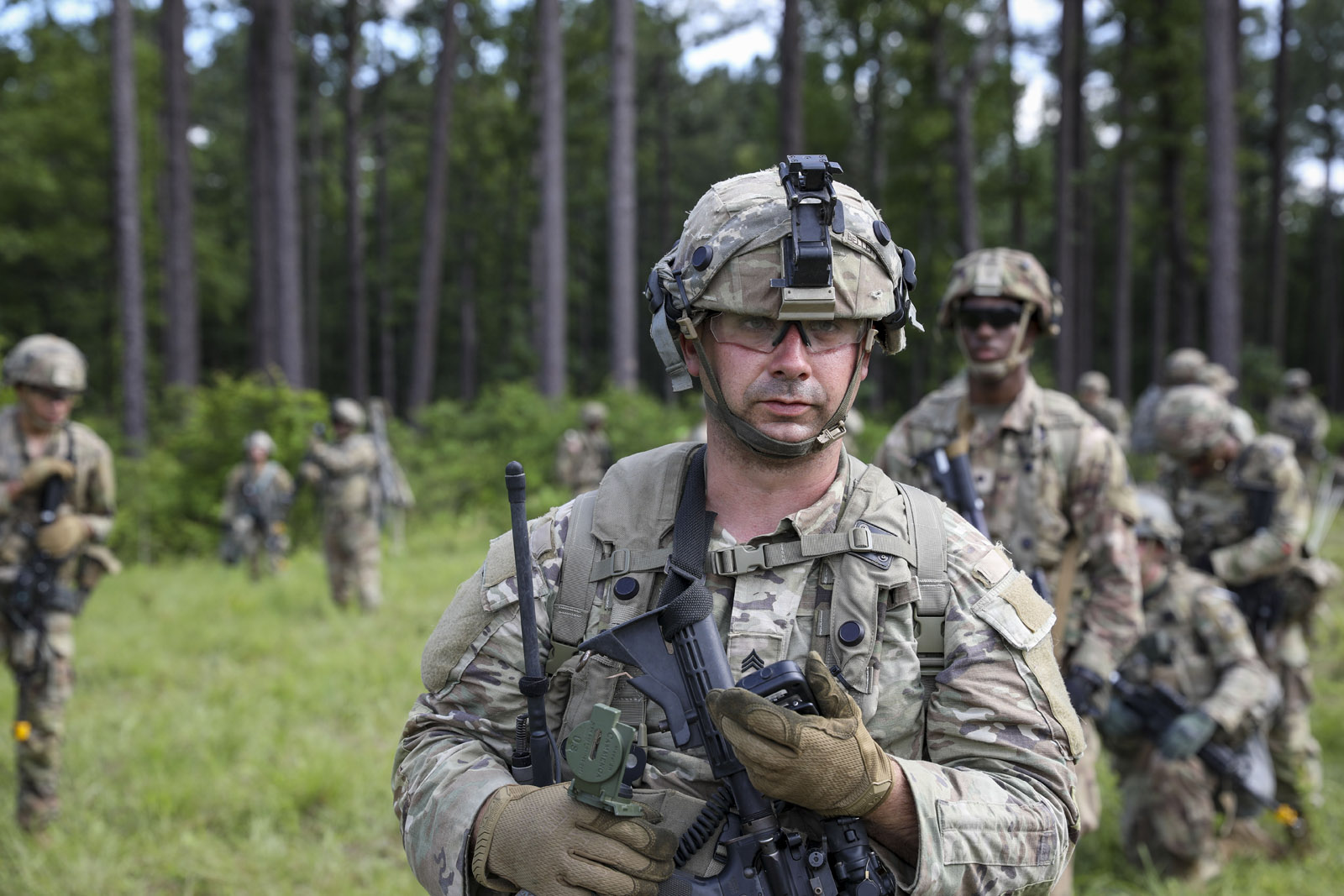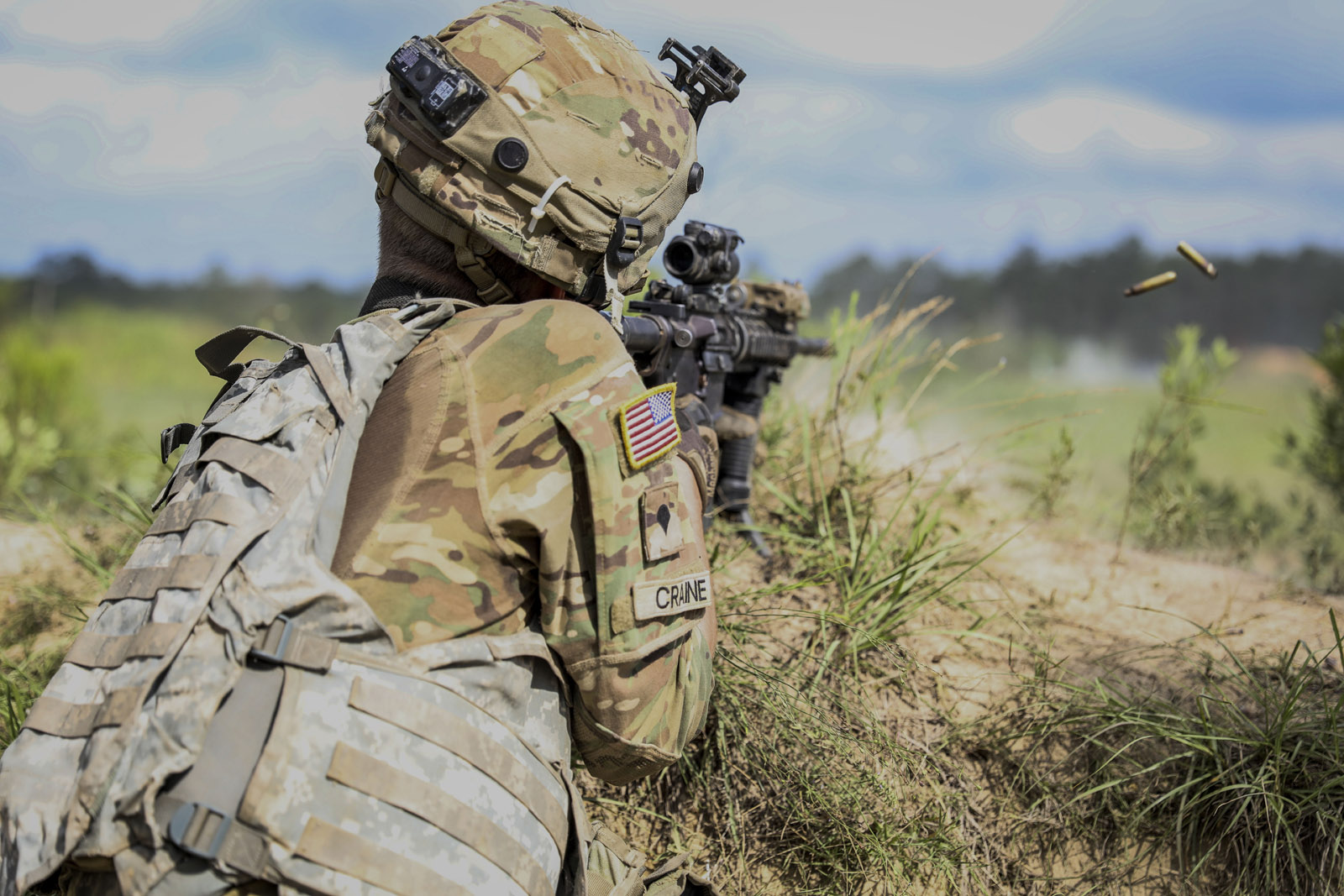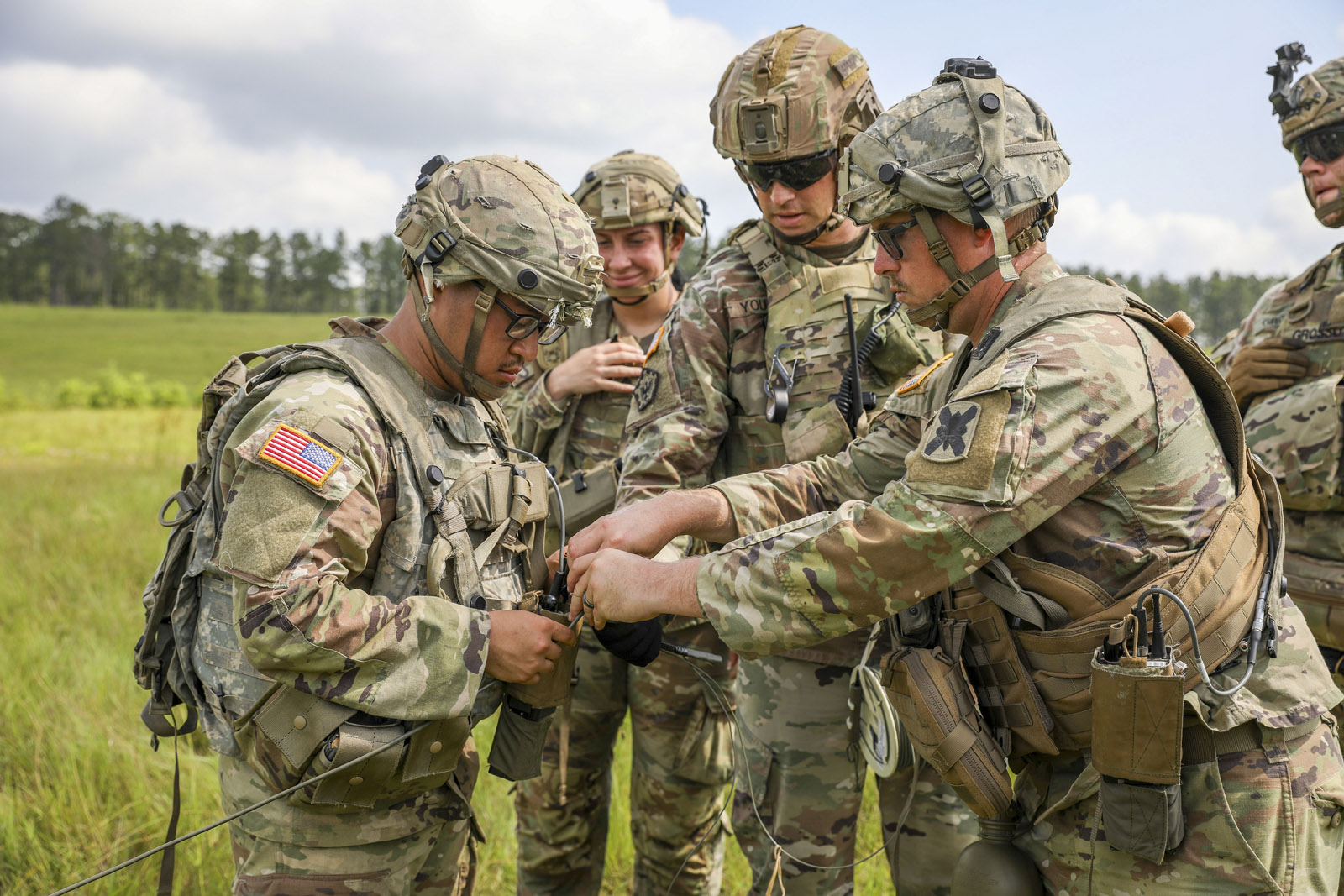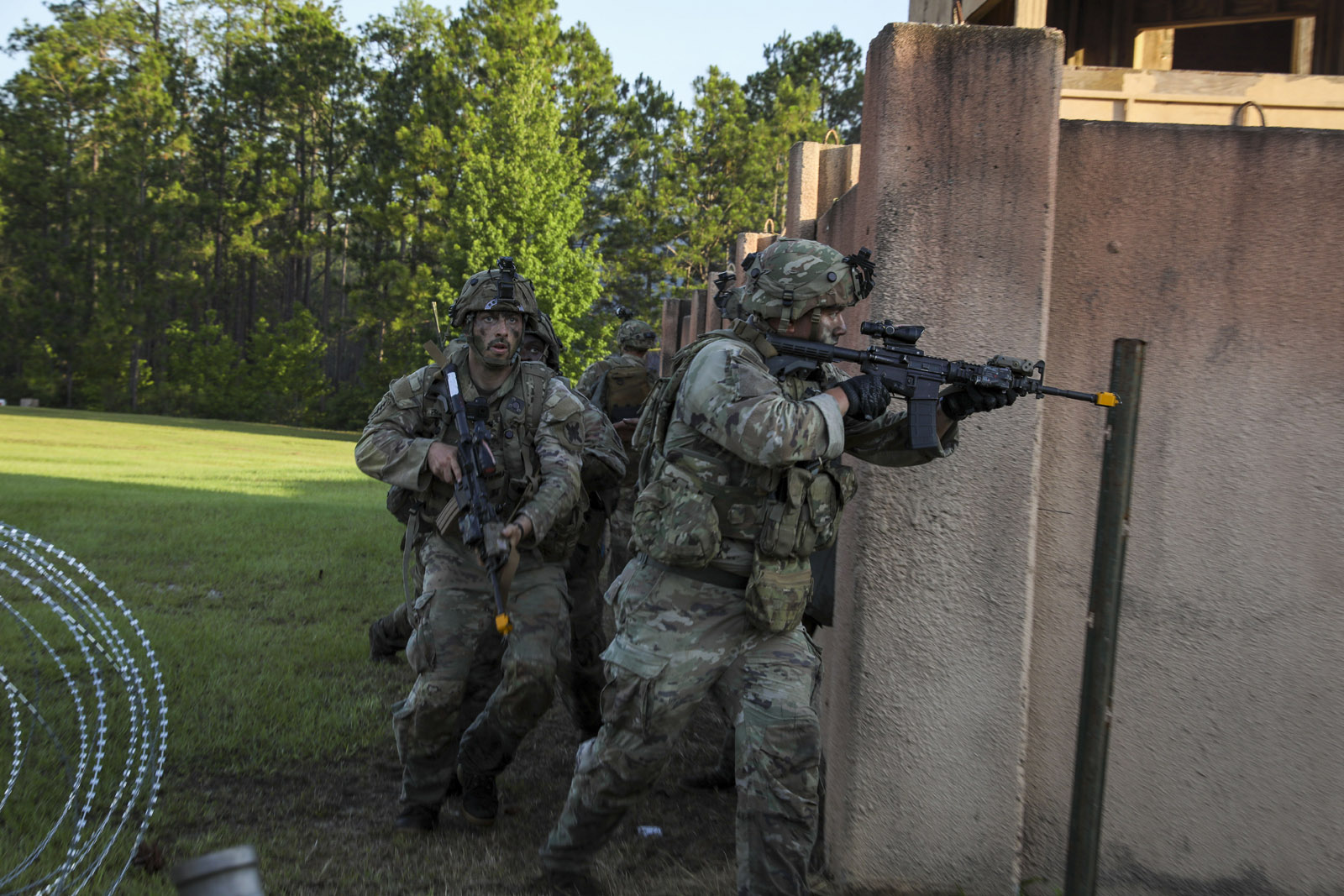By Staff Sgt. Noshoba Davis, Louisiana National Guard Public Affairs Office
CAMP SHELBY JOINT FORCES TRAINING CENTER, Miss. – Approximately 2,700 Soldiers with the Louisiana Army National Guard’s 256th Infantry Brigade Combat Team completed a three-week annual training period known as eXportable Combat Training Capability, May 19 – June 6 at Camp Shelby Joint Forces Training Center near Hattiesburg.
 XCTC is a National Guard program that provides an experience similar to a combat training center. The program certifies platoon proficiency in a field environment. During the training, Soldiers known as Observer Coach/Trainers (OCTs) with the 177th Armored Brigade, First Army Division East, observed, coached and trained the 256th.
XCTC is a National Guard program that provides an experience similar to a combat training center. The program certifies platoon proficiency in a field environment. During the training, Soldiers known as Observer Coach/Trainers (OCTs) with the 177th Armored Brigade, First Army Division East, observed, coached and trained the 256th.
“The training resources available through the XCTC program aren’t always available to infantry brigade combat teams conducting their annual training periods, so my goal was to maximize every opportunity to improve our warfighting capabilities across all functional areas,” said Col. Jonathan Lloyd, 256th IBCT commander. “XCTC provides the Soldiers of the Tiger Brigade a platform to not only increase their proficiency, but to build generational readiness while simultaneously improving unit cohesion and morale through some of the most realistic and rigorous training we can offer them.”
 During the first two weeks, Guardsmen were trained and tested in each of their specialty areas through situational training exercise lanes and live fire exercise lanes that tested proficiency with assigned weapon systems, vehicles, equipment, and their ability to move quietly and tactically during the day and night. The units in the 256th include traditional infantry, artillery, combat engineer, cavalry, transportation and various sustainment and support units.
During the first two weeks, Guardsmen were trained and tested in each of their specialty areas through situational training exercise lanes and live fire exercise lanes that tested proficiency with assigned weapon systems, vehicles, equipment, and their ability to move quietly and tactically during the day and night. The units in the 256th include traditional infantry, artillery, combat engineer, cavalry, transportation and various sustainment and support units.
Lt. Col. Daniel Fritts, commander of the 3rd Battalion, 156th Infantry Regiment, explained that for many of the Soldiers, this was their first time seeing the terrain at Camp Shelby and working with enablers such as engineers.
 “This is a validation exercise, so we utilize the Army’s methodology of crawl, walk, run, before we move into a live fire exercise,” said Fritts. “The dry runs allow them to see the terrain and realize they may not be as synchronized as they thought they were. As they do each run and become more proficient, the Soldiers will then add blank ammo to each rehearsal while speeding up with each iteration and improving synchronization between the maneuver element and the engineers.”
“This is a validation exercise, so we utilize the Army’s methodology of crawl, walk, run, before we move into a live fire exercise,” said Fritts. “The dry runs allow them to see the terrain and realize they may not be as synchronized as they thought they were. As they do each run and become more proficient, the Soldiers will then add blank ammo to each rehearsal while speeding up with each iteration and improving synchronization between the maneuver element and the engineers.”
For Soldiers like Spc. Seth Vergona, an engineer with the 769th Brigade Engineer Battalion, 256th IBCT, the biggest challenge was learning to work with new units and integrating into their operations.
 “It allows us to build cohesion with those infantry units, provide better plans and tactics, and provide the units with better breeches and obstacle identifiers,” said Vergona.
“It allows us to build cohesion with those infantry units, provide better plans and tactics, and provide the units with better breeches and obstacle identifiers,” said Vergona.
The first two weeks allow the units to practice mission roles before conducting a three-day field training exercise. These training lanes include area security, platoon screens, live fire exercises with mortars, truck gunnery, field artillery fire and route reconnaissance.
Staff Sgt. Aaron Appling, a squad leader with the Alabama National Guard’s 1st Battalion, 173rd Infantry Regiment, 256th IBCT, said that even with building cohesion to establish a good team, he hopes his Soldiers learn that communication is key to everything they do as infantry Soldiers.
 “Communication is key, especially under the stress of rounds in combat. Being able to communicate their equipment status, anything on a L.A.C.E. (liquid, ammo, casualty and equipment) report, up to their leadership allows the mission to continue,” said Appling.
“Communication is key, especially under the stress of rounds in combat. Being able to communicate their equipment status, anything on a L.A.C.E. (liquid, ammo, casualty and equipment) report, up to their leadership allows the mission to continue,” said Appling.
For Soldiers like Pvt. Kyle Jones with the 3-156th, who had to learn a new position while at XCTC, communication was the biggest takeaway during training.
“I’m originally a dismounted Soldier, but for XCTC, I was moved to a gunner position,” said Jones. “I learned that communication is key between a gunner, driver and truck commander, especially during night movements. It’s harder for the driver and TC to see at night, so it’s really on the gunner to explain what is going on around and outside the truck.”
The FTX was based on a brigade tactically moving into and taking control of an area that was under enemy control. The opposing force was played by the 2nd Squadron, 108th Cavalry Regiment, which is headquartered in Shreveport, La.
 “I sincerely appreciate all the hard work each Soldier and leader put into this training,” said Lloyd. “The leadership challenge moving forward is to ensure the areas we need to sustain and improve upon at the conclusion of this training event, are incorporated into the plan for training during the next training year.”
“I sincerely appreciate all the hard work each Soldier and leader put into this training,” said Lloyd. “The leadership challenge moving forward is to ensure the areas we need to sustain and improve upon at the conclusion of this training event, are incorporated into the plan for training during the next training year.”
This XCTC rotation was one part of the Brigade’s preparation for a possible deployment in 2025 and a Joint Readiness Training Center rotation at Fort Johnson in Leesville, La.





